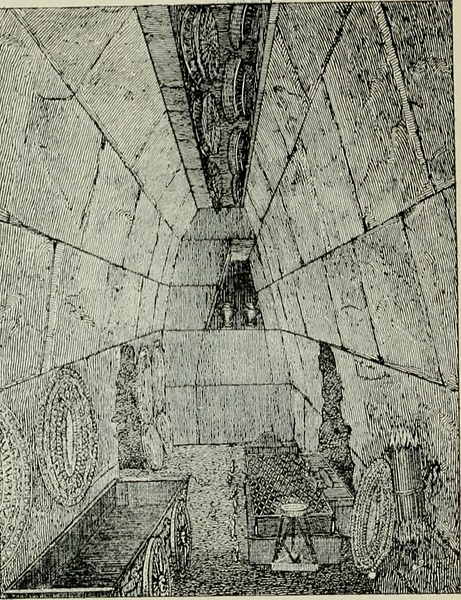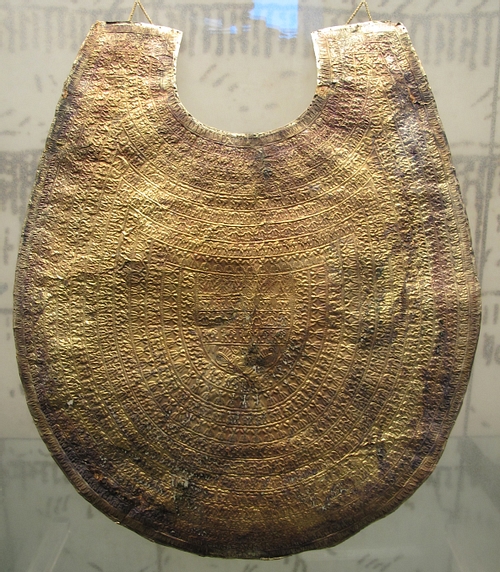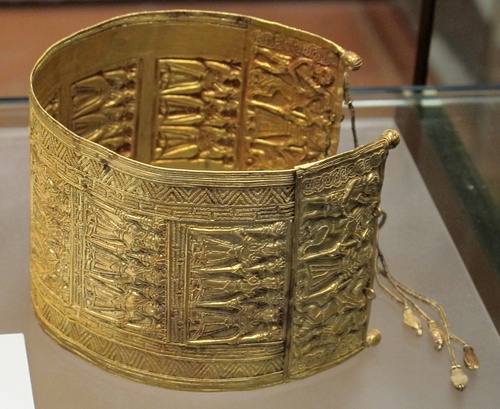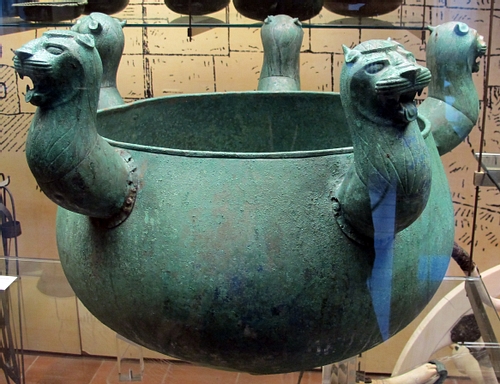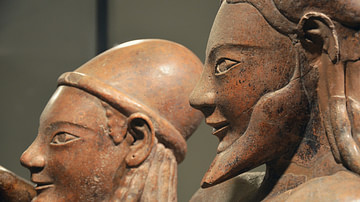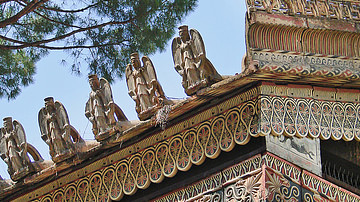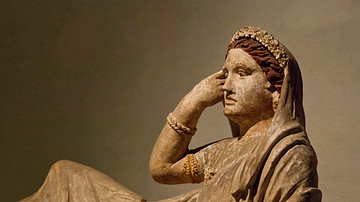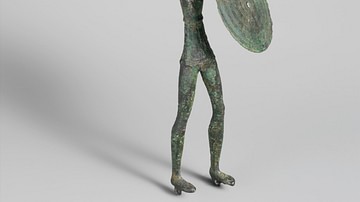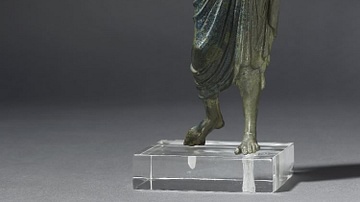The Regolini-Galassi Tomb is located in the Etruscan town of Cerveteri (aka Cisra or Caere) near the western coast of central Italy, around 50 km north of Rome. Cerveteri flourished between the 7th and 4th century BCE and has hundreds of rock-cut tombs from that period. The Regolini-Galassi tomb dates to c. 680-660 BCE and is one of the most important as its discoverers, Regolini and Galassi, found the tomb intact and full of Etruscan artefacts including the largest horde of gold jewellery found at any Etruscan site.
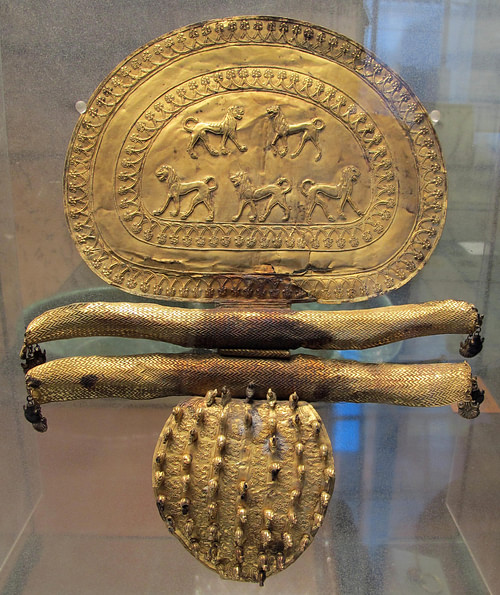
The Discovery
The Tomba Regolini-Galassi is named after the Italian priest Alessandro Regolini and the general Vicenzo Galassi, who discovered it in 1836 CE at the Sorbo necropolis just outside Cerveteri. The pair of amateur archaeologists had previously dug out five tombs from a huge earth mound north of the town, but all of them had been looted, and then their luck changed. Tomb number six was, miraculously, intact. Untouched for over two and a half millennia, it would be the most spectacular discovery in the region up to that time and the treasures within would fire the public imagination and create a whole new interest in the Etruscans.
The rock-cut tomb takes the form of a long gabled rectangular corridor with two oval chambers, one on either side at the mid-point, and the main chamber at the end. Unfortunately for posterity, Regolini and Galassi were rather clumsy in their excavations. Entering the tomb from above, their digging caused the roof to collapse damaging some of the furniture inside. In addition, there was so much gold and precious goods inside that they mostly discarded any pottery finds.
Larthia's Gold
On entering the main chamber, Regolini and Galassi came face to face with the skeleton, bedecked in fine jewellery, of the tomb's female occupant. She wore a gold pectoral 42 cm across decorated with hundreds of tiny animals and plants, a symbol of her high social, perhaps even royal, status. The woman also wore a belt with a magnificent gold fibula made with repoussé and granulation techniques. It is decorated with five lions on its upper disk and 50 minute ducks in three dimensions, arranged in seven rows on the lower disk which covers the pin. She wore two wide gold bracelets decorated with trios of dancing females with long hair and long dresses. Two necklaces are in gold, one with alternating round and elongated beads which are incised with lines, and the other with three large gold and amber pendants. Finally, there are gold earrings, spiral finger rings, and pins.
Whatever the role of this person was in life – certainly an aristocrat and likely a priestess, princess, or queen - we do know her name: Larthia, inscribed on each piece of an eleven-piece silver service set found at her feet. Neither was she interred alone in the tomb, for one of the side chambers contained the ashes of a male, set inside a pottery funerary urn in a wall niche. The second side chamber had no occupant (despite some early accounts of a third 'warrior' remains which has led to a repetition of the error in many sources ever since) but did have a quantity of silver gilt bowls.
Other Finds
Other items in the tomb, many with Near Eastern-like decoration include a large bronze latticework couch with six legs and a headrest; eight round bronze shields – some with molded panther heads with inlaid enamel eyes; bronze incense burners; cauldrons decorated with lion and griffin heads (protomes), and a throne with embossed lions, stags, and plants in the same material; silver cups, vases, and dishes; carved ivory boxes; and bucchero wares in the form of bowls, pitchers, beakers, and 33 grieving effigy figures. One bucchero bottle has a helpful complete Etruscan alphabet inscribed on its base. A magnificent gilded silver bowl is decorated with a lion hunt and procession of warriors and clearly indicates links with the Near East. Finally, there was a four-wheeled bed-carriage on which lay the woman of the tomb when she was in state and a two-wheeled chariot or biga which the Etruscans used for ceremonies and processions.
More everyday items to metaphorically feed and amuse the deceased on their way to, or actually in, the next life include iron tools and several large terracotta vases which once contained foodstuffs such as wheat, oil, honey, and eggs. There was an ivory dice, and even a bronze stand with suspended disks used for the Greek drinking game of kottabos where drinkers tried to swish the slops from their wine cup at a target. The contents of the tomb can be seen today in its own dedicated room in the Museo Gregoriano Etrusco of the Vatican Museums, Rome.
